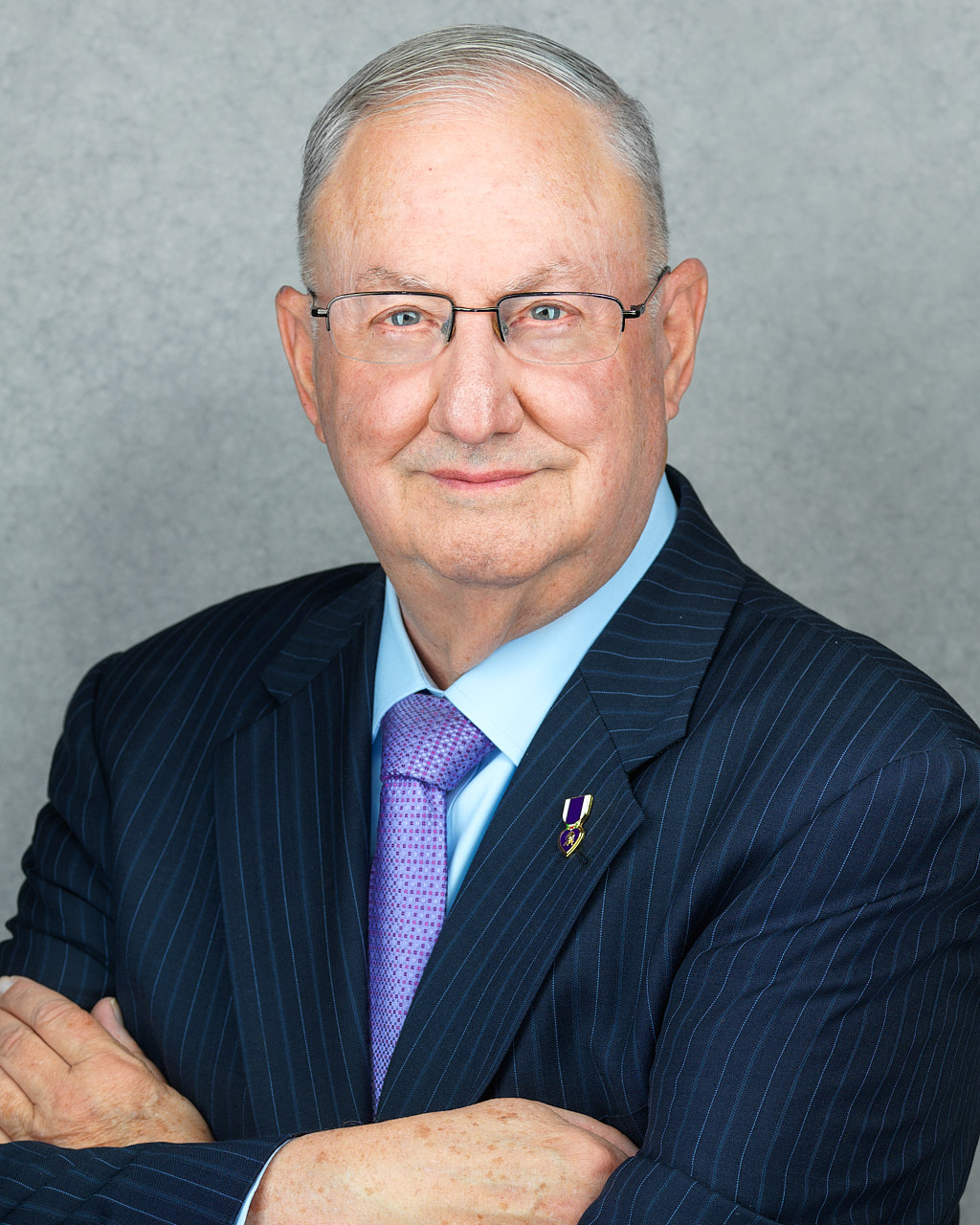The draft ended fifty years ago. Can the all-volunteer force survive another fifty?
As two individuals who volunteered for the United State Marine Corps during the peak years of the Vietnam War draft and ended our military careers when the all-volunteer force (AVF) had been in effect for close to thirty-five years, we have experienced, witnessed, and influenced policies during both the draft and volunteer forces. In fact, most of those who served in Vietnam with us in our infantry platoons were draftees and performed their missions with courage and professionalism. In our post-uniformed careers, we have served in government, worked in industry, and built think tank assessments of the AVF. While we would strongly oppose reinstating the draft, we do not believe the AVF, at its fiftieth anniversary, can succeed on its current path.
Since the nation’s founding 247 years ago, military conscription has been used for only thirty-five of those years, specifically during times of major conflict: the Revolutionary War, Civil War, World Wars I and II, Korea, and Vietnam. At times, conscription was so controversial—regarding its necessity and application—that it sparked large instances of civil disobedience, such as during the American Civil War. The draft riots in New York City in July 1863 left hundreds, some say perhaps a thousand, dead. There was similar opposition in the South to the conscription legislation passed by the Confederate Congress.
However, at other times, when the need for conscription was widely accepted, and its application viewed as universal and fair, the practice was largely unquestioned. But for numerous reasons involving demographics and social challenges, constitutional questions, moral and ethical issues, and changing public perceptions of fairness and the burdens of service, conscription versus alternatives has shown that it can quickly become a divisive public and political issue. Those factors converged in the late 1960s resulting in a decision by President Richard M. Nixon to abandon the draft and transition the American military to an all-volunteer force.
By most measures, the adoption of an AVF for the American armed forces has been a success. It created what many believe to be the most capable, professional, and equitable military force in the history of the world. But will this model prove to be sufficient and affordable in the years ahead? Will it be workable in the period of growing strategic competition between the United States and emerging powers with competing global ambitions? Is it viable given changing attitudes regarding public service and the attitudes and values of service-aged citizens? Is the target age population for new recruits (ages eighteen to twenty-four) sufficiently qualified physically, mentally, and medically, among other considerations? And, of equal importance, is it affordable in a period of increasing national debt and a growing federal budget where defense already accounts for half of discretionary spending? Are the annual fully burdened costs and subsequent life-cycle costs sustainable?
These are difficult questions as the answer to several is “no.” The time for avoiding these mounting problems is long past. In its current form, the AVF is on an unsustainable path forward—both from a cost and recruitment standpoint—and our nation’s political leaders must recognize this. An understanding of the history of the AVF as well as the present factors that are stressing the system will help inform the critical decisions ahead. It is paramount to make these difficult decisions that are necessary to preserve the AVF, especially as the world grows ever more dangerous and unstable with the rising threat of China.
Brief history of the all-volunteer force
Conscription was used multiple times during the early part of the twentieth century, and the draft and its selective service process became rather normal for the American public and was generally seen as a rite of passage for young men. Perhaps that was best illustrated in March 1958 when entertainment superstar Elvis Presley reported to his reception station in Memphis, Tennessee, to begin a two-year stint in the US Army. However, this was not the case by April 28, 1967, when heavyweight boxing champion Muhammad Ali refused to be inducted stating a religious exception and declaring, “I ain’t got no quarrel with those Vietcong.”1Some controversy remains over what Muhammad Ali actually said and when. See Bob Orkand, “I Ain’t Got No Quarrel with Them Viet Cong,” New York Times, June 27, 2017https://www.nytimes.com/2017/06/27/opinion/muhammad-ali-vietnam-war.html.
What had changed? Obviously, as the Ali statement demonstrated, it was the increasing US involvement in Vietnam, which saw draft calls increase from 82,000 in 1962 to nearly 230,000 by 1967. But there was an associated problem, one that would always bedevil the draft process: “Who shall serve when not all need to serve?”2A paraphrase of this statement served, as we shall show, as the subtitle of the 1967 report of the presidential commission convened by President Lyndon B. Johnson, commonly called the “Burke Commission.” The formal title was, “In Pursuit of Equity: Who Serves When Not All Serve.”
As the nation’s involvement in the Vietnam War deepened, the perception that the draft was fair began to change, as those with higher education, more favorable financial conditions, and better local connections avoided the draft while those of lesser means became more likely to be drafted. Approval for the war overall dropped from a high of 61 percent at the beginning to 40 percent in early 1968—and approval of the draft saw a similar decline.3See Gallup poll results regarding public opinion on the Vietnam conflict via Wikimedia Commons:https://commons.wikimedia.org/wiki/File:The_Vietnam_War_and_Public_Opinion.png. In this timeframe, military personnel killed in action increased from 1,928 in 1965 (the year US ground troops arrived in Vietnam) to a high of 16,899 just three years later.4“Vietnam War U.S. Military Fatal Casualty Statistics,” National Archives, n.d., https://www.archives.gov/research/military/vietnam-war/casualty-statistics, accessed July 2023
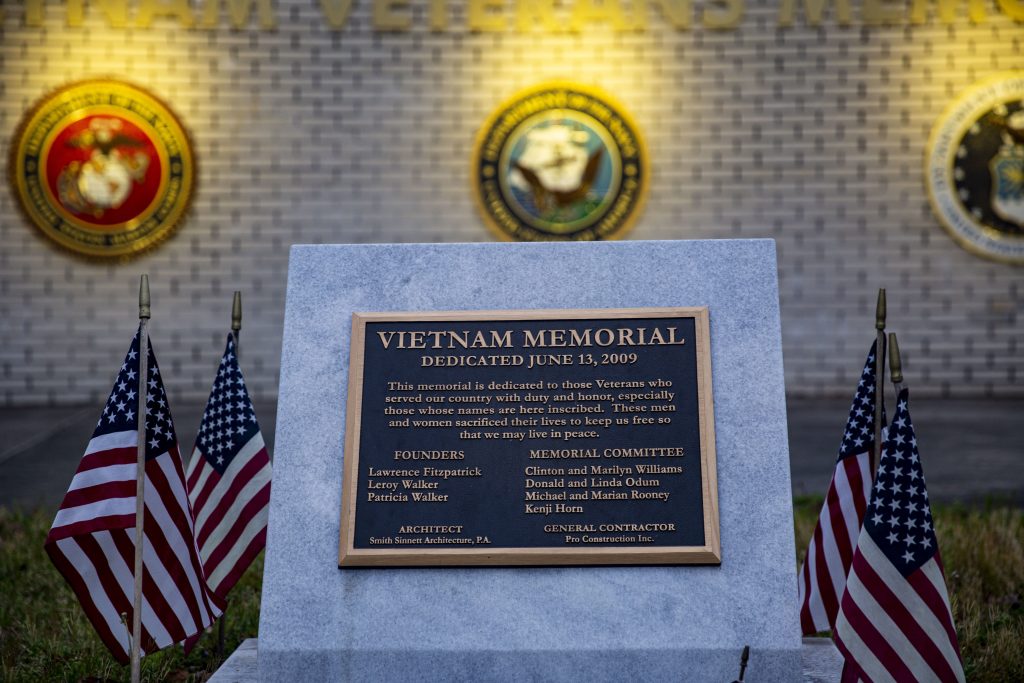
Recognizing the deep unpopularity of the draft supported by his predecessor, Republican nominee for president Richard Nixon stated that he supported moving to a volunteer armed force during a televised campaign speech on October 16, 1968. After his election, Nixon appointed a presidential commission to address the issue, one that would be led by former Eisenhower Defense Secretary Thomas Gates.
In some ways, the Gates Commission is misunderstood. Many believe it studied the idea of an AVF and decided it was feasible. In actuality, Nixon had already made the decision to institute it. The job of the Gates Commission was to validate, operationalize, and sell the AVF concept. In his instructions to the commission, Nixon stated:
I have directed the Commission to develop a comprehensive plan for eliminating conscription and moving toward an all-volunteer armed force. The Commission will study a broad range of possibilities for increasing the supply of volunteers for service, including increased pay, benefits, recruitment incentives and other practicable measures to make military careers more attractive to young men.
See the “Nixon Papers,” National Archives and Records Administration, 1969, Vol. 1, 258.
Regarding the cost of an AVF, the Gates Commission acknowledged that the budgetary costs would be higher. Still, the final report endorsed commissioner and economist Milton Friedman’s calculus that the overall costs would actually be lower than those of a mixed force of volunteers and conscripts. As the Gates Commission stated very early in its report:
[The] output of the civilian economy is reduced because more men serve in the military than would be required for an all-volunteer force of the same strength. This cost does not show up in the budget. Neither does the loss in output resulting from the disruption in the lives of young men who do not serve. Neither do the costs borne by those men who do not serve, but who rearrange their lives in response to the possibility of being drafted. Taking these hidden and neglected costs into account, the actual cost to the nation of an all-volunteer force will be lower than the cost of the present force.
See Thomas Gates et al., The Report of the President’s Commission on an All-Volunteer Armed Force, President’s Commission on an All-Volunteer Armed Force, February 1970, 9.
In essence, this was a macroeconomics argument, one that focused on overall economic productivity and labor allocations while largely avoiding a comprehensive discussion of the federal budgetary expenses that would result from increased pay and improved benefits over time. As argued by one evaluation decades after the introduction of the AVF:
While Friedman and others included direct compensation in their calculations and analysis, they either did not anticipate or did not address indirect costs resulting from efforts to maintain an effective force in the face of changing demographics. These include increases in retirement costs for a recruited force more likely to make the military a career, the housing, family program and health care costs for a force more likely to be older and married, the direct cost of recruiting infrastructure and advertising, and the costs associated with increased usage of benefits like the Army College Fund and the GI Bill.
Louis G. Yuengert, “America’s All-Volunteer Force: A Success?, The US Army War College Quarterly: Parameters 45, no. 4 (Winter 2015): 58.
Some members of the Gates Commission offered caveats regarding their all-volunteer proposal and how to make it sustainable. Gates himself had several, including reforming the military’s “up-or-out” promotion system; eliminating the military’s retirement system that benefits only those who stay twenty years and then incentivizes them to leave right away; and changing pay and compensation from one based on tenure to one based on skills and performance.5See Arnold Punaro, written testimony submitted to the United States Senate Committee on Armed Service, May 3, 2017, 7.
Over the subsequent years, however, none of the three concerns voiced by Gates has been implemented fully. Significant pay increases were established rather quickly when the draft ended, and over time additional benefits to those serving have been added mainly regarding health care expansion, childcare, family housing, and greater educational opportunities. The AVF became more professional, and the military retirement community grew—currently almost double the active-duty force in total numbers (2.4 million retirees compared with 1.3 million active-duty personnel).
The challenges of the all-volunteer force today
The AVF can be considered a success, resulting in an exceptionally high-quality force in both peace and wartime. It is important to note that the actual forces committed in Desert Shield/Desert Storm and Iraq and Afghanistan were around 697,000 and 1.9 million, respectively. The number of personnel actually engaged in those conflicts was small compared with those in World War II, Korea, and Vietnam. In fact, during the peak of the Cold War, draft registration was reinstated because the leadership at the time believed the AVF was strictly a peacetime force.
The AVF is so ingrained in today’s society that the alternative—the draft—is not even considered a viable option. So, while we agree that the AVF is here to stay, it would be unwise for our nation to not also recognize its unsustainable cost growth trends.
Since the attack on September 11, 2001, and the subsequent greatly expanded deployment of the armed forces, “pay per active-duty service member has grown over 80 percent (in current-year dollars, or about 50 percent in constant dollars) … military pay has increased 40 percent more than civilian pay since 2000, and enlisted service members are now paid close to 90 percent that of civilians with comparable education and experience.”6Ibid.
Accordingly, experts including former Secretaries of Defense Robert Gates, Leon Panetta, and Charles Hagel and former senior military leaders including General Ron Fogleman and Admiral Gary Roughead have also agreed that the “all-in” costs of the AVF are not sustainable.7Ibid., 8 And although the Gates Commission did not recommend a large expansion of benefits, the fact is that such benefits have been expanded over time and must be considered as part of the all-in costs of the AVF.
In the last twenty years, the average fully burdened cost for a mid-career individual on active duty—which includes support structures for the service members and their families, such as the cost to recruit them and provide skills training, the military health program, a taxpayer-subsidized grocery chain, military dependents’ schools, a childcare system, and more—has gone from $80,000 per year to $160,000 at the end of the George W. Bush administration, to current estimates of close to $400,000 today. These rapidly rising costs provide some explanation as to why the active-duty force size has contracted by about 2 percent since 2001—the cost of adding more members is simply too high. Additionally, the $400,000 fully burdened cost can be misleading, as the Department of Defense (DOD) uses a composite rate strictly for budgeting purposes.
Further, the life-cycle costs of the retiree force, with pay increased each year with a cost-of-living adjustment and mostly free health care under TRICARE for Life, are prohibitively expensive under the current active-duty and retirement program: “Today’s system currently pays a service member seventy years for those who retire after only twenty years of active service. For example, if someone joins the military at age eighteen, they can retire with full retirement benefits at age thirty-eight. Given that the average life expectancy is now in the mid-eighties, the department is currently responsible for approximately fifty years of additional retirement costs.”8Arnold Punaro, The Ever-Shrinking Fighting Force (McLean, VA: Punaro Press, 2021), 494. The DOD health care budget is over $54 billion per year, and retirees and their dependents account for more than 50 percent of the personnel served and 65 percent of the costs.
Further, the department does not know or track active-duty personnel’s fully burdened and life-cycle costs. While some might argue that it is too difficult to track these figures, others suspect that DOD does not want to know the true costs because of the sticker shock. But it is imperative to reach an agreement on the definitions and metrics of the fully burdened and life-cycle costs of the AVF. These figures must take into account all of the costs such as those for health care, education, and retirement.
The Reserve Forces Policy Board (RFPB) did a yearlong study, deliberating in open sessions and coordinating in the department and with outside experts like the Government Accountability Office and Congressional Budget Office, and made a lengthy report to the secretary of defense with six major recommendations, which were mostly supported by the DOD leadership.9Reserve Forces Policy Board, Requiring the Use of Fully Burdened and Life Cycle Personnel Costs for All Components in Total Force Analysis and for Budgetary Purposes: Update Report to the Secretary of Defense, September 10, 2019. Figures 1 and 2 outline what the RFPB found:
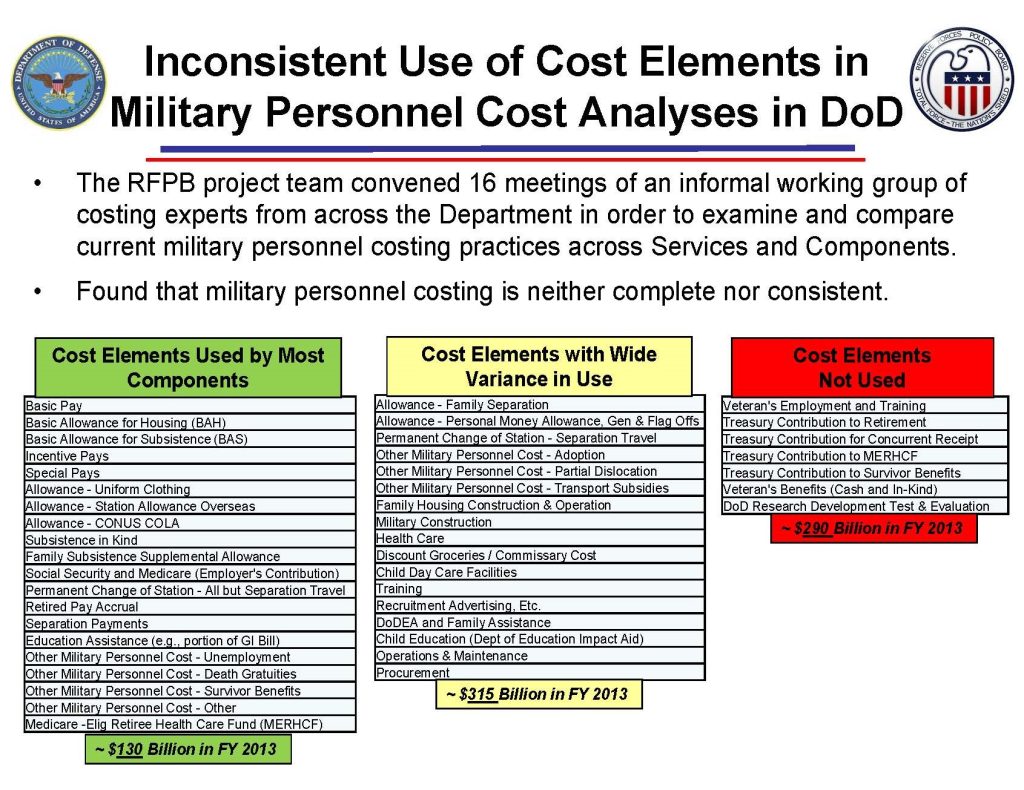
Source: Reproduced from Reserve Forces Policy Board, Requiring the Use of Fully Burdened and Life Cycle Personnel Costs for All Components in Total Force Analysis and for Budgetary Purposes: Update Report to the Secretary of Defense, September 10, 2019.
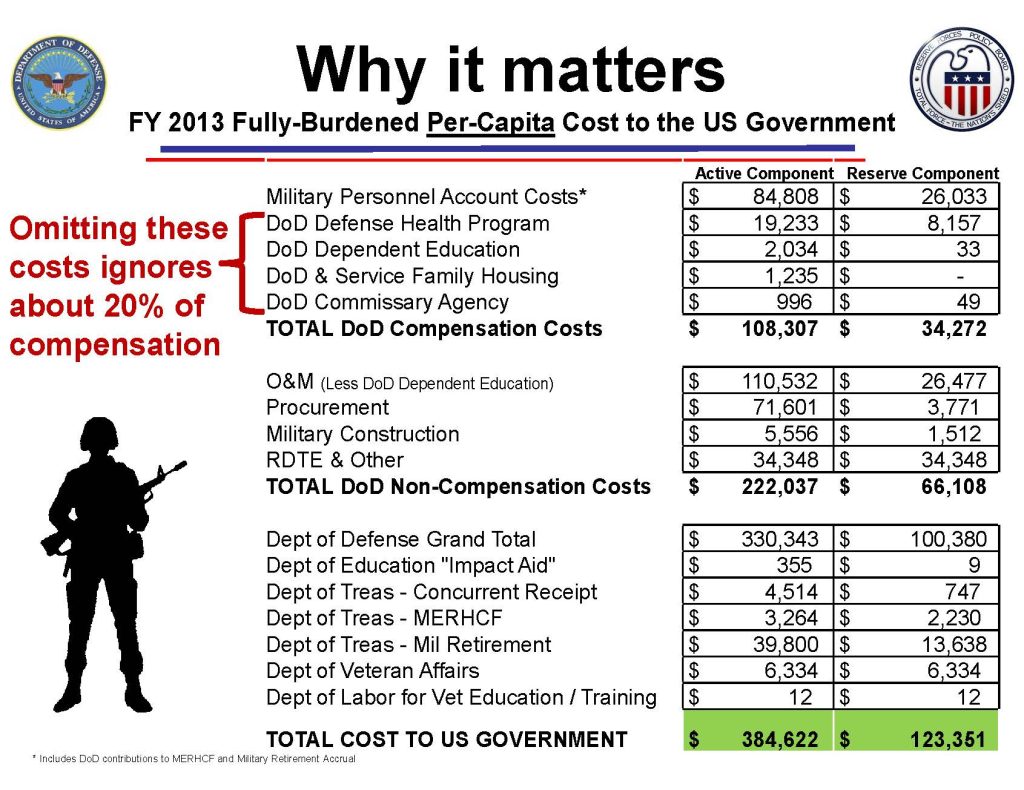
Source: Reproduced from Reserve Forces Policy Board, Requiring the Use of Fully Burdened and Life Cycle Personnel Costs for All Components in Total Force Analysis and for Budgetary Purposes: Update Report to the Secretary of Defense, September 10, 2019.
In its 2014 interim report, the Military Compensation and Retirement Modernization Commission showed that the total cost for pay, benefits, health care, and retirement was close to $410 billion a year.10Military Compensation and Retirement Modernization Commission, Report of the Military Compensation and Retirement Modernization Commission: Interim Report, June 2014. Additionally, the commission highlighted the presence of a $1 trillion unfunded liability over the next ten years in the military retirement fund, which is not included in any budget. Military retirees, a growing population of over 2.4 million people, are living longer, have expanding health care costs, and under the current system have inflation-indexed retirement income.
As these figures demonstrate, we continue to spend large amounts to pay for the force of yesterday at the expense of the force of tomorrow. Veterans’ care doubled in the last twenty years, from 2.4 percent of the federal budget in fiscal year 2001 to 4.9 percent in fiscal year 2020, even though the veteran population decreased by 6.8 million in that period—meaning the United States is spending more for every veteran.11Linda J. Blimes, “The Long-Term Costs of United States Care for Veterans of the Afghanistan and Iraq Wars,” Watson Institute for International and Public Affairs, Brown University, August 18, 2021.https://watson.brown.edu/costsofwar/files/cow/imce/papers/2021/Costs%20of%20War_Bilmes_Long-Term%20Costs%20of%20Care%20for%20Vets_Aug%202021.pdf.
The government will also have to contend with caring for the veterans of the post-9/11 conflicts. Brown University’s Costs of War project has estimated that between 2001 and 2050, those costs will amount to somewhere between $2.2 and $2.5 trillion:
This includes the amount already paid in disability and related benefits and medical care, as well as the projected future cost of lifetime disability benefits and health care for those who have served in the military during these wars … Yet the majority of the costs associated with caring for post-9/11 veterans has not yet been paid and will continue to accrue long into the future. As in earlier U.S. wars, the costs of care and benefits for post-9/11 veterans will not reach their peak until decades after the conflict, as veterans’ needs increase with age.
Linda J. Blimes, “The Long-Term Costs of United States Care for Veterans of the Afghanistan and Iraq Wars,” Watson Institute for International and Public Affairs, Brown University, August 18, 2021
These staggering costs are not being factored into budget, troop, or strategy decisions. When looking at this comparison from 1998 to 2014, growth in military pay, quality of life, retired pay, the Department of Veterans Affairs, and DOD health care far exceeded both the Gross Domestic Product Price Index and the Employment Cost Index. This is why the consensus among experts is that the costs are unsustainable.
And the sustainability problems of the AVF are only exacerbated by the other areas of inefficiencies in the Pentagon. Despite defense spending levels that, in constant dollars, are higher than the peak of the Ronald Reagan buildup, the United States’ defense capabilities can now be characterized as an “ever-shrinking fighting force.” Today, the US military has one million fewer active-duty personnel and 35-40 percent fewer major combat units, such as the army brigade combat teams, navy battle force ships, and air force combat aircrafts, than the United States had at the time of the Reagan buildup. Since 9/11, the number of active-duty military personnel has decreased by over 100,000 people while the civilian government workforce has increased by 136,000 people. Cutting warfighters while adding bureaucrats does not strike fear into our adversaries. No matter where you look, this shrinking trend has continued consistently through many administrations, both Democratic and Republican, and persists today.
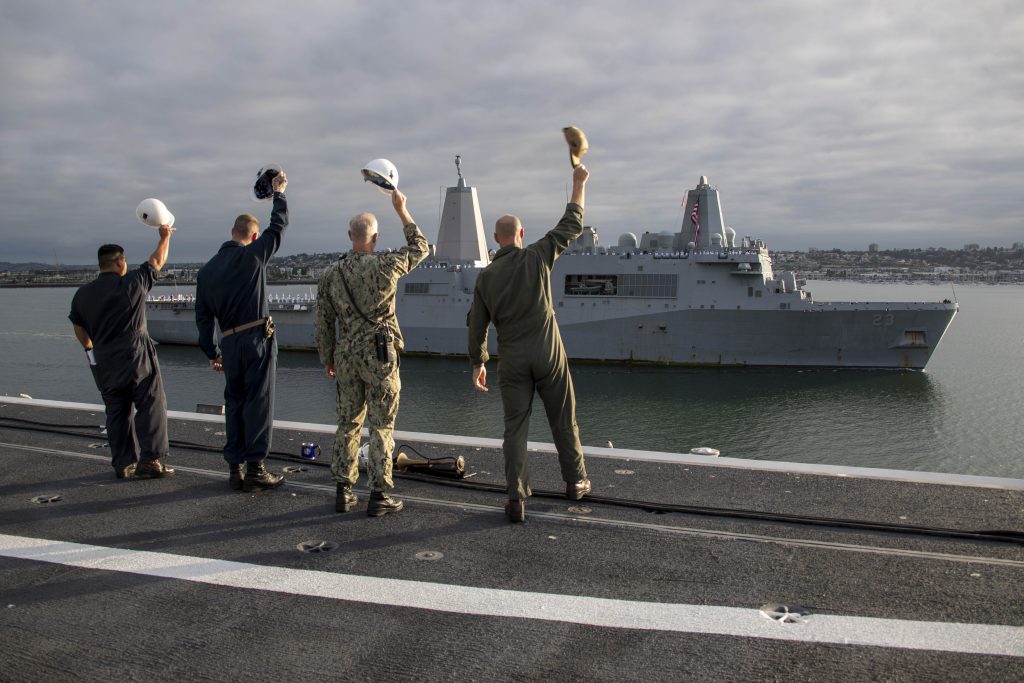
A main driver of this negative trend is DOD’s broken acquisition system. In total, the current federal procurement data show that DOD spends $400 billion a year on goods, services, supplies, and equipment, yet the acquisition system is plagued by bureaucratic inefficiencies, yearslong lag times, and significant cost overruns. Ballooning personnel and overhead costs are another factor. Defense-wide spending has grown from 5 percent of the budget to 20 percent of the budget today; DOD’s support functions represent over 40 percent of its total workforce; the defense agencies have gone from one in 1952 to twenty-eight defense agencies today with 170,000 people spending in excess of $120 billion; and DOD maintains one of the largest property books in the world, worth over $880 billion—over 562,000 facilities on more than 4,800 sites in all fifty states, seven US territories, and forty other countries. We know there is a pressing need for reform in all these areas to reverse the unsustainable trends, but we are not moving fast enough in that direction today.
Despite the multiple studies and noted experts raising the alarm bells about the sustainability of the AVF since its inception, these warnings have been ignored in administration after administration. The inability to tackle these difficult problems over the years is a sad indictment of our political leadership over the last half century.
The current recruiting crisis
Despite expanded pay and benefits, the armed services face significant recruiting challenges today. In fiscal year 2022, the army missed its recruiting goal by some fifteen thousand soldiers. This roughly equates to the strength of one army combat division. The other services have also struggled to meet recruiting numbers, but to a lesser degree. Why is this the case?
As explained by noted defense experts David Barno and Nora Bensahel, the current recruiting challenge is driven by several factors. An obvious issue is an economy with an unemployment rate that hovers at historically low levels. Another is a shrinking demographic of those of service age (commonly called the “cohort”). In addition, the rigors of current military recruitment eligibility standards mean that fewer in the cohort are eligible for military service, a number that has recently dropped from 29 percent to 23 percent of those in the pool. Among those in the military cohort, the number inclined to consider military service (called “positively propensed”) has declined significantly in recent years from over 20 percent to less than 10 percent.12David Barno and Nora Bensahel, “Addressing the U.S. Military Recruiting Crisis,” War on the Rocks, March 10, 2023. Additionally, a recent Gallup survey shows that only 60 percent of Americans have a great deal or quite a lot of confidence in the US military—the lowest figure in twenty-five years.13Mohamed Younis, “Confidence in U.S. Military Lowest in over Two Decades,” Gallup, July 31, 2023, https://news.gallup.com/poll/509189/confidence-military-lowest-two-decades.aspx.
According to a recent survey of people aged sixteen to twenty-eight conducted by the army, one of the top reasons that young people did not want to volunteer was because they did not want to put their lives on hold. The top three other main concerns were fear of death, worries about post-traumatic stress disorder, and leaving friends and family. However, a perception that the military is becoming too politically correct, or “woke,” accounted for only about 5 percent of respondents’ concerns about joining the military—a far cry from what has been suggested by many of the critics of the recruiting crisis. Quite the contrary: Almost three times as many respondents (13 percent) were concerned about racial or gender discrimination in the army.14Lolita C. Baldor, “Army Sees Safety, Not ‘Wokeness,’ as Top Recruiting Obstacle,” AP, February 12, 2023, https://apnews.com/article/afghanistan-politics-military-and-defense-race-ethnicity-6548adcb0fee590f3427771d1e1eeea7.
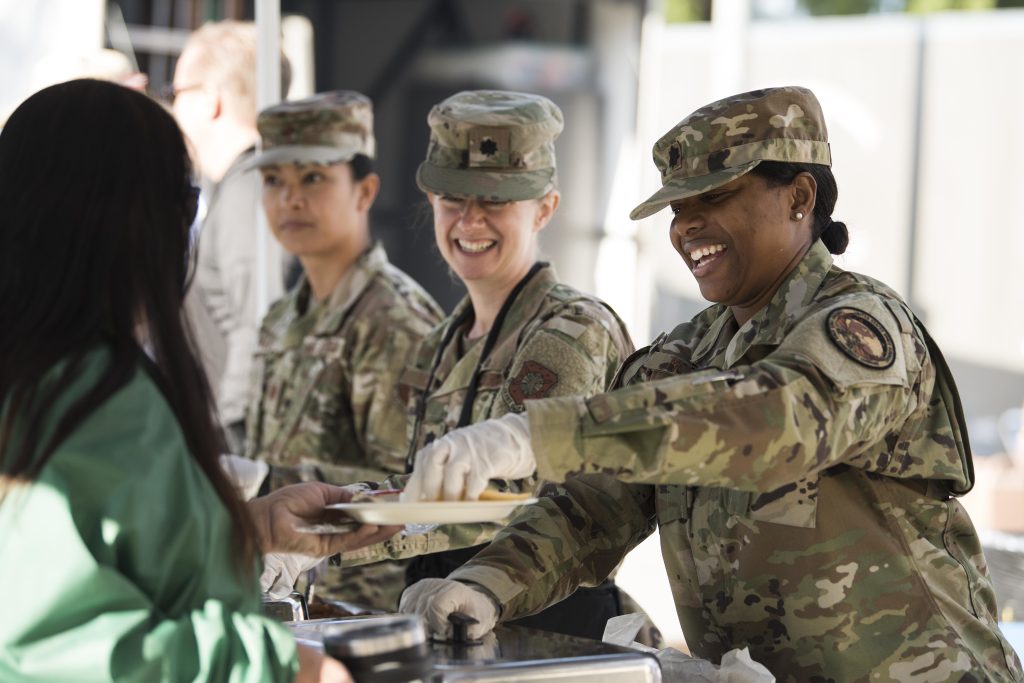
Additionally, as the military has become smaller and more professional, it has become a much smaller presence in American society. Since the end of the Cold War and the closure and consolidation of military bases and facilities, the military is simply less present in US communities. Moreover, in some ways the military has become a “family business” with over half of enlistees having a close family member with military service.15See Yuengert, “America’s All-Volunteer Force,” 61.
However, servicemembers and veterans are increasingly less likely to recommend military service to their families—a troubling trend in an already difficult recruiting environment. In 2019, almost 75 percent of respondents said they would recommend military service to someone considering it. In 2021, that figure fell to 63 percent. The top reasons that respondents would not recommend military life were the views that the military is not family friendly, that it does not pay enough to keep up with skyrocketing inflation, and that military leadership is letting them down.16“Fewer Veterans Are Recommending Military Service,” Veterans of Foreign Wars, November 30, 2022, https://www.vfw.org/media-and-events/latest-releases/archives/2022/11/fewer-veterans-are-recommending-military-service.
No simple solutions
The challenges outlined above are significant, with no easy solutions to any of them. But no longer can the nation ignore these mounting problems. We cannot simply wish away the iceberg straight ahead; we must course correct now before an imminent collision.
Several studies have been conducted by respected organizations regarding the quandary. The Bipartisan Policy Center conducted the most comprehensive one in March 2017, which made some thirty-nine recommendations. The majority of the recommendations—such as military spouse employment, expanded day care services, health care modernization, active duty to reserve force transitions, changes to military pay scales, and more flexible military assignment procedures—are intended to make military life more appealing to contemporary American youth, and hopefully attract more recruits.
Other Bipartisan Policy Center recommendations would modernize several aspects of traditional military personnel management such as eliminating the up-or-out promotion system, making promotions much more merit based, allowing for flexible career service (such as a two-year leave of absence from the military for professional or personal reasons), and better aligning military specialties with civilian certifications in similar vocations.17See Bipartisan Policy Center, Building a F.A.S.T. Force: A Flexible Personnel System for a Modern Military, March 2017. Many of these recommendations are reiterations of the original Gates Commission recommendations.
Barno and Bensahel offered their own suggestions: increasing the number of recruiters, raising the maximum age for new recruits from thirty-nine to forty-one, allowing for longer delayed entry after enlisting, expanding the Junior Reserve Officers’ Training Corps program in high schools, recruiting more women, and dropping some disqualifying personal issues. Such steps, they argue, would expand the recruiting cohort without compromising standards.18Barno and Bensahel, “Addressing the U.S. Military Recruiting Crisis.”
As the various survey results demonstrate, a lack of trust in military leadership is also hindering recruiting. There have been a number of examples over recent years to justify this view, from the botched withdrawal from Afghanistan to the “Fat Leonard” corruption scandal in the navy, from the horrid state of military housing to congressional, civilian, and military leaders—both retired and, in some cases, on active duty—taking actions that counter the apolitical nature of the military. Senior leaders need to take a hard look in the mirror and better acknowledge how their actions affect the force and take responsibility for their failures and mistakes.
However, all these solutions must also come with the recognition that the fully burdened and life-cycle costs of the AVF, in its current form, are unsustainable. To begin with, Congress and DOD must agree on a definition and metric to track the all-in cost of the AVF, which they do not currently do. Ignoring or overlooking these data means continuing on an unsustainable path.
The 2019 RFPB report gives examples of DOD elements committing to upgrading their calculations to meet the “fully burdened” standard and then, even after several years, failing to meet that commitment. In particular, the report highlights the need for the director of Cost Assessment and Program Evaluation (CAPE) to take the lead on this, something he pledged to do in early 2013; in the decade since, CAPE has addressed only four of the six recommendations and only in part.
If the next decade follows the same trend, the department will eventually find itself in a funding crisis of its own making thanks to a refusal to track the all-in costs for its active-duty personnel, which include items such as real estate, facilities, utilities, infrastructure, training, and other support costs. In other words, the problem is avoidable, but it requires immediate attention.
The 2019 RFPB study highlighted that while personnel costs are rising across the board, the greatest increase has been in the active component (AC). “In terms of per capita costs to the US government [between fiscal years 2013 and 2018], AC costs have increased over four times as much as the reserve component (RC)—roughly $57,000 versus $14,000. While the costs for both RC and AC troops are increasing, the AC costs are increasing faster, and the RCs still maintain their significant cost advantage of being more than 71 percent cheaper than their AC counterpart.”19Punaro, The Ever-Shrinking Fighting Force, 47. Any solution to the sustainability problem must acknowledge and take advantage of the fact that the RC is a bargain for taxpayers.
There has been a real reluctance to debate these trends publicly, so there first needs to be a recognition of just how much the AVF’s all-in costs are. From there, the nation’s leaders in the Pentagon and Congress need to determine if they will put their hands on the helm or just leave it on autopilot. One thing is clear, however: As so many senior military leaders have stated, the current path is unsustainable. If the all-volunteer force is to survive for another half century, we must find solutions that work and are affordable—the nation’s future security depends on it.
About the authors
General James L. Jones (USMC, retired) is the executive chairman emeritus of the Atlantic Council, former commandant of the US Marine Corps, former Supreme Allied Commander Europe, and former national security advisor to President Barack Obama. He is the founder and president of Jones Group International.
Major General Arnold Punaro (USMC, retired) is a nonresident senior fellow in the Atlantic Council’s Forward Defense program and a member of the Scowcroft Center for Strategy and Security’s advisory board. Punaro served as the staff director of the Senate Armed Services Committee, the commanding general of the 4th Marine Division, and as a defense industry executive. He is the CEO of The Punaro Group, LLC.

Forward Defense, housed within the Scowcroft Center for Strategy and Security, generates ideas and connects stakeholders in the defense ecosystem to promote an enduring military advantage for the United States, its allies, and partners. Our work identifies the defense strategies, capabilities, and resources the United States needs to deter and, if necessary, prevail in future conflict.
Image: US soldiers assigned to the 4th Infantry Division render salutes to honor the memory of fallen soldiers during the playing of the national anthem at Kit Carson Park Colorado. (US Army photo by Spc. Nathan Thome)

